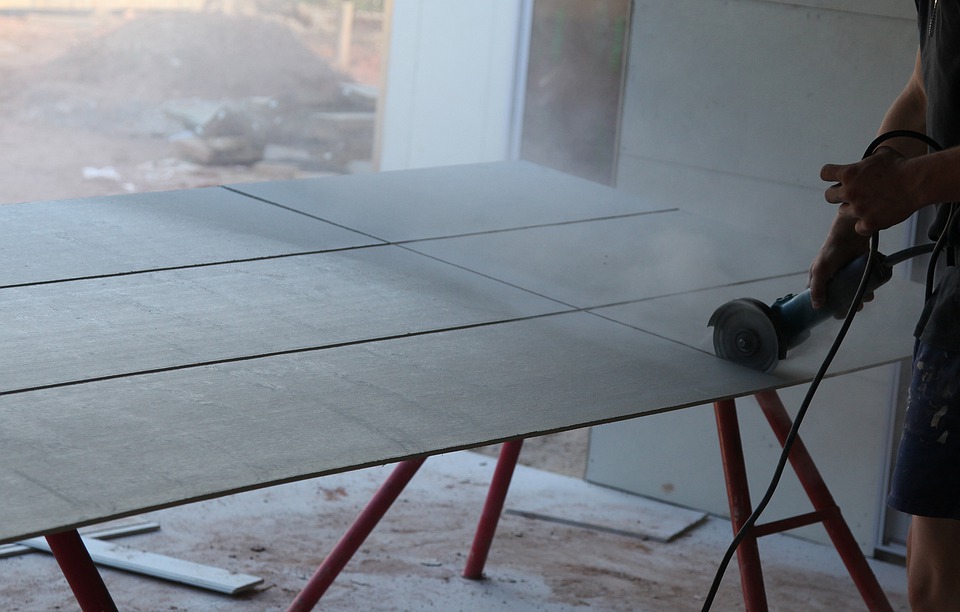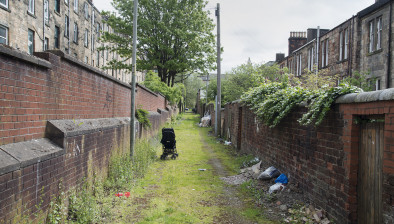Scotland’s approach to cladding crisis won’t be piecemeal, says housing minister
UK housing secretary Robert Jenrick yesterday agreed to pay £3.5 billion to remove cladding from hundreds of thousands of unsafe high-rise flats in England and criticised the Scottish Government for doing “absolutely nothing” to help flat-owners affected in Scotland.

With £5bn investment in building safety, including the £3.5bn announced yesterday, the housing secretary confirmed to the House of Commons that the UK Government will fully fund the cost of replacing unsafe cladding for all leaseholders in residential buildings 18 metres (six storeys) and over in England.
Asked what the government’s building safety fund was being spent on elsewhere in the UK, he said: “In Scotland, according to a recent FOI request, the Scottish Government has done absolutely nothing. The funding they received from the buildings safety fund is sat in a bank account in Edinburgh and they’ve done nothing with it.”
The criticism follows a call from the Property Managers Association Scotland for the Scottish Government to offer financial assistance to the thousands of flat owners caught up in the issue.
Housing minister Kevin Stewart said the Scottish Government will assess overall need before setting out its solution, and won’t follow the “first-come, first-served” approach in England.
Mr Stewart told Scottish Housing News: “We look forward to detail from the UK Government on consequentials for Scotland. Time after time we hear that the commitment from the UK Government, although welcome, will not be sufficient to help those that need it and a piecemeal approach to a solution is not serving anyone well.
“I am very concerned by the difficulties being faced by people living in buildings with external wall cladding, who have concerns about safety, or who are unable to buy, sell or remortgage their homes and I understand the anxiety that this is causing.
“The Scottish Government has been clear that we need to take a different approach to the first-come, first-served approach in England - to assess overall need and ensure that the limited funding we have is used to greatest effect.
“We know that others also have a part to play. It is important that developers take their responsibility for cladding problems seriously, and some developers in Scotland are stepping up to support homeowners. We have a duty to look after public money and to consider the most appropriate support we can offer in Scotland.
“I will not take an approach that sees public money running out before we can help those that need it most. While I, of course, understand that if you are a resident in a flat with cladding that this will be small consolation, it is my duty to act in the public interest, secure value for money and that every penny of funding for remediation in Scotland reaches those that need it most.
“We have not and will not repeat the mistakes made elsewhere of allocating funding before it is clear where and what the overall need is. We are taking a more logical approach of establishing the scale of the issue first. Experience from those buildings where remediation is underway shows that this needs a long-term and sustainable plan.”
Under Mr Jenrick’s plan, lower-rise buildings, with a lower risk to safety, will gain new protection from the costs of cladding removal with a generous new scheme offered to buildings between 11 and 18 metres. This will pay for cladding removal – where it is needed – through a long-term, low interest, government-backed financing arrangement.
Under the scheme, no leaseholder will ever pay more than £50 a month towards the removal of unsafe cladding. This will provide reassurance and security to leaseholders, and mortgage providers can be confident that where cladding removal is needed, properties will be worth lending against.
The government is working with industry to reduce the need for EWS1 forms, preventing leaseholders from facing delays and allowing hundreds of thousands of homes to be sold, bought, or re-mortgaged once again.
The housing secretary also announced plans to introduce a, ‘Gateway 2’ developer levy. The proposed levy will be targeted and apply when developers seek permission to develop certain high-rise buildings in England.
In addition, a new tax will be introduced for the UK residential property development sector. This will raise at least £2 billion over a decade to help pay for cladding remediation costs. The tax will ensure that the largest property developers make a fair contribution to the remediation programme, reflecting the benefit they will derive from restoring confidence to the UK housing market. The government will consult on the policy design in due course.
Mr Jenrick said: “This is a comprehensive plan to remove unsafe cladding, support leaseholders, restore confidence to this part of the housing market and ensure this situation never arises again.
“Our unprecedented intervention means the hundreds of thousands of leaseholders who live in higher-rise buildings will now pay nothing towards the cost of removing unsafe cladding.
“Remedying the failures of building safety cannot just be a responsibility for taxpayers. That is why we will also be introducing a levy and tax on developers to contribute to righting the wrongs of the past.
“These measures will provide certainty to residents and lenders, boosting the housing market, reinstating the value of properties and getting buying and selling homes back on track. We are working with lenders and surveyors to make this happen.
“Our landmark intervention will make homes safer and free those who did the right thing – saving for years to get on the property ladder – to enjoy the homes in which they have invested so much.”
David Westgate, group chief executive Andrews Property Group, said the extra funding will barely scratch the surface of the cladding crisis.
He added: “Millions of property owners are stuck in limbo because their building has potentially unsafe cladding, and haven’t got the time to wait for it be replaced, which could take years.
“They are already facing financial difficulties because they can’t sell their property or remortgage onto a more affordable rate product.
“The government has also failed to address all those homeowners who are living in buildings below 18m that have cladding, and have been caught up in this fiasco.
“The law says they don’t need an EWS1 form but the reality is completely different. Without a form to show the cladding is safe, mortgage companies are reluctant to lend on a property block with cladding even if it’s below 18m in height.
“The government has let down millions of UK homeowners who bought a property in good faith only to find it’s become a chain around their necks.”
Andrew Southern, chairman of property developer Southern Grove, said: “Taxing developers, most of whom weren’t responsible for the cladding crisis, is just laughable. Why should a company that has never installed dangerous cladding, and perhaps never built high rise blocks in the past, be tarred with the same brush and penalised when they’re no more responsible for this scandal than those in other sectors building cars, running our hospitals and educating our children.
“This sort of regressive tax will only stagnate housebuilding, which is the exact opposite of what the UK needs. By applying it only to the largest developers building the tallest buildings, it will also disincentivise creation of housing in the high density areas that are badly in need of new stock.”
Yesterday, housebuilder Persimmon made a provision of £75 million to address cladding safety issues on 26 buildings and group is in the process of writing to building owners, management companies and factors to agree next steps.









